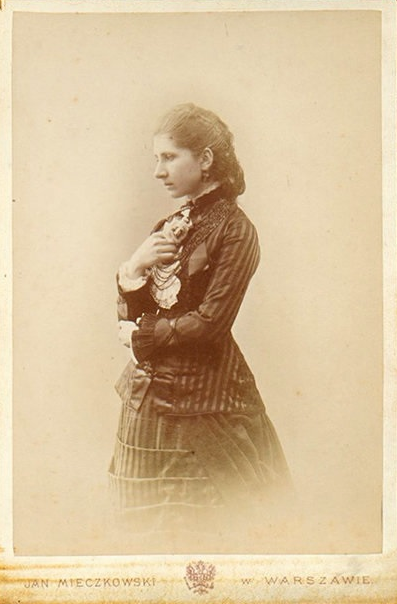
Countess Maria Magdalena Zawisza Yanovna (Maria Magdalena Yanovna-Kryshtafavna-Samuelevna-Kazimirovna Zawisza-kęsgailos) was born on June 26 (July 8, New Style) 1861 in Warsaw (Russian empire), the son of Count It Tadeushavicha Zawisza (1822-1887) of the his Polish wife - Countess Maria Kviletskay. Zawisza was treated in XVII-XVIII centuries as magnaterii to the Grand Duchy of Lithuania, holding high positions in the Minsk province and other accidents on the highway Pskov, as well as in the court of the King of Poland and Grand Duke of Lithuania.
Maria was baptized a Catholic with the name "Maria Magdalene".
In April 27, 1882 Countess Maria Magdalena Zawisza in Warsaw, married a Polish Count Ludwik Yuzefoma Krasinski (1833-1895). She had one daughter - Countess Maria Ludwik Krasinski (1883-1958).
In 1895 after the death of her husband she left for Western Europe. In 1906, the second time she married Prince Nicholai Radziwill Vaclav (1879-1914).
Magdalena Radziwill made donations to the church and health care. By her efforts were opened hospitals, Belarusian schools in Kuhtichah, Kamenica; built industry Libava-Romny railroad. Her second charity activities became Belarusian print fund. In St. Petersburg, Magdalena joined the activity of the first official Belarusian community, "The sun will glaze in our window" (1906-1914), provided the Community financial assistance.
Significant funds Magdalena Radziwill donated Belarusian Publishing Society in Vilnius. For its money first books of Belarusian literature classics were printed. She sponsored the first Belarusian newspaper "Nasha Niva" and the Catholic newspaper "Bielarus".
In 1917, Magdalena Radziwill donated a diamond necklace at the base of the Belarusian Greek Catholic board in Rome, the money from the sale of which were transferred to the ownership of the Belarusian Marian Fathers in Druya.
After the capture of Minsk by Bolshevik troops Magdalena traveled to Warsaw. In 1919, she tried to return to Minsk, but was refused by the new government.
In 1922, Magdalena moved to Lithuania. She settled in Kovno. The Lithuanian government in gratitude for the charitable and sponsorship activities of our compatriot awarded her by the Order of "Great Cross Gedymina". Later, from Kovno Magdalena moved to Krulyavets, and in 1930 left Poland and moved to the German city of Badesberg-Rhein in Germany.
Once in the early 30-ies of Bavaria seized the fascist movement in 1932, Magdalena moved to Switzerland (Friborg). She decided to leave the world and go to the monastery, to opt for a Dominican monastery of the city of Friborg, known brutality of their status. However, outside the monastery does not cease to engage in charity. She continued to fund the Belarusian organizations, which were in Poland. In 1935, with her own money she built two schools for Jewish children in Warsaw.
The last 13 years of his life Magdalena held in Switzerland, died in 1945 in the city of Friborg, where she was buried.
The descendants of Magdalena have decided that it would be right to re-bury her ashes in Belarus, as in the words of Mateo Radziwill, Magdalen’s will was to be buried in Minsk.
In July 2017 the ashes of Magdalena Radziwill was returned to Minsk and transferred to the church of Saints Simon and Helena, who lived next to the Princess.
The final resting place of Maria Magdalena Radziwill become church of the Holy Trinity on the Hill Gold (Church of St Roch).



